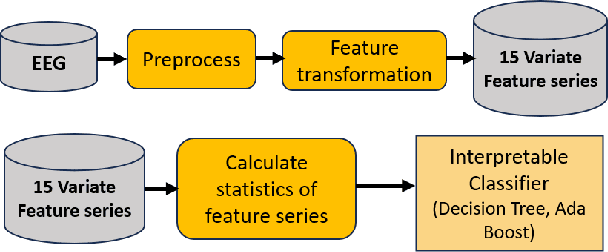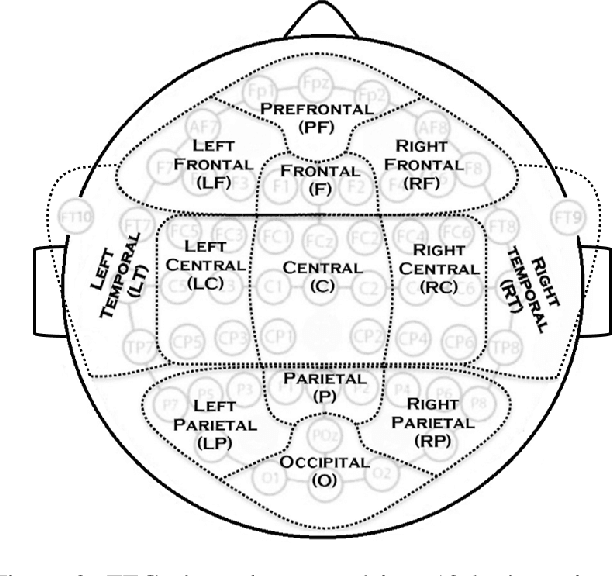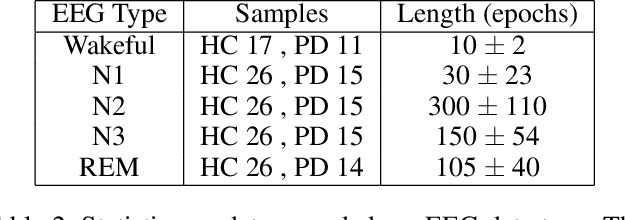Amarpal Sahota
Investigating Brain Connectivity and Regional Statistics from EEG for early stage Parkinson's Classification
Aug 01, 2024Abstract:We evaluate the effectiveness of combining brain connectivity metrics with signal statistics for early stage Parkinson's Disease (PD) classification using electroencephalogram data (EEG). The data is from 5 arousal states - wakeful and four sleep stages (N1, N2, N3 and REM). Our pipeline uses an Ada Boost model for classification on a challenging early stage PD classification task with with only 30 participants (11 PD , 19 Healthy Control). Evaluating 9 brain connectivity metrics we find the best connectivity metric to be different for each arousal state with Phase Lag Index achieving the highest individual classification accuracy of 86\% on N1 data. Further to this our pipeline using regional signal statistics achieves an accuracy of 78\%, using brain connectivity only achieves an accuracy of 86\% whereas combining the two achieves a best accuracy of 91\%. This best performance is achieved on N1 data using Phase Lag Index (PLI) combined with statistics derived from the frequency characteristics of the EEG signal. This model also achieves a recall of 80 \% and precision of 96\%. Furthermore we find that on data from each arousal state, combining PLI with regional signal statistics improves classification accuracy versus using signal statistics or brain connectivity alone. Thus we conclude that combining brain connectivity statistics with regional EEG statistics is optimal for classifier performance on early stage Parkinson's. Additionally, we find outperformance of N1 EEG for classification of Parkinson's and expect this could be due to disrupted N1 sleep in PD. This should be explored in future work.
A Time Series Approach to Parkinson's Disease Classification from EEG
Jan 20, 2023



Abstract:Firstly, we present a novel representation for EEG data, a 7-variate series of band power coefficients, which enables the use of (previously inaccessible) time series classification methods. Specifically, we implement the multi-resolution representation-based time series classification method MrSQL. This is deployed on a challenging early-stage Parkinson's dataset that includes wakeful and sleep EEG. Initial results are promising with over 90% accuracy achieved on all EEG data types used. Secondly, we present a framework that enables high-importance data types and brain regions for classification to be identified. Using our framework, we find that, across different EEG data types, it is the Prefrontal brain region that has the most predictive power for the presence of Parkinson's Disease. This outperformance was statistically significant versus ten of the twelve other brain regions (not significant versus adjacent Left Frontal and Right Frontal regions). The Prefrontal region of the brain is important for higher-order cognitive processes and our results align with studies that have shown neural dysfunction in the prefrontal cortex in Parkinson's Disease.
 Add to Chrome
Add to Chrome Add to Firefox
Add to Firefox Add to Edge
Add to Edge